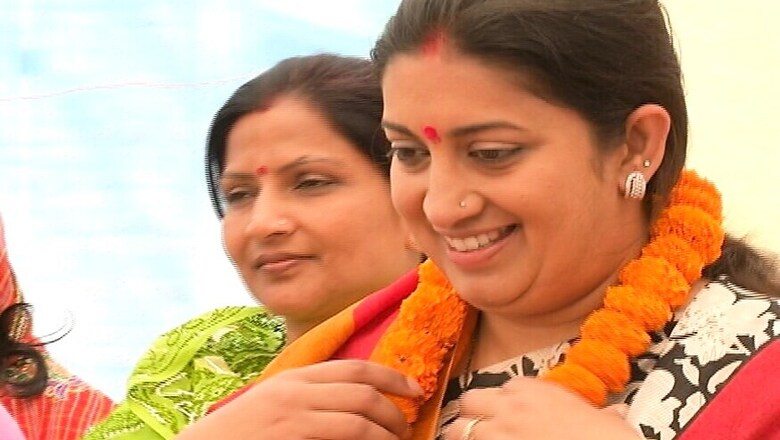
views
The cabinet reshuffle started with the BJP trying to forge a winning social coalition ahead of the 2017 Uttar Pradesh Assembly elections by inducting ministers from the Dalit and dominant OBC Kurmi community.
However, as the day progressed, the so-called 'Scheme UP' suffered several jolts with Smriti Irani being shifted out of the HRD ministry to the low-profile ministry of Textiles. The decision came as a surprise for many in the BJP in Uttar Pradesh as over time Irani had emerged a serious contender for the party's CM face in 2017.
Not many in the state BJP are willing to come on record on a sensitive issue of cabinet reshuffle. But party leaders are quick to point out that the ministry of Textiles can well play a bigger role in handling Modi government’s agenda for the large weaver community in Uttar Pradesh.
The weaver community in the state largely comprises economically marginalised Muslims with their biggest concentration in the prime minister's constituency of Varanasi and nearby areas of Bhadohi and Chandauli.
During the 2014 polls the community had, surprisingly, gone with the Modi wave, propelled on promises of 'Acche Din'.
Modi too as prime minister had initiated some big projects, including a textile park in Varanasi.
The recent package of Rs. 6000 crores is also being cited as proof of the importance the prime minister gives to this ministry. Therefore bringing in Smriti Irani to Textiles may well not be a demotion ahead of the high-stake UP election; the ministry's performance can be a high on the campaign agenda being built around the development narrative.
So the question is: Has Smriti Irani been brought to textiles with this perspective, will she play a bigger role in party's UP agenda? BJP state spokesperson Dr Chandramohan said, "every leader and worker is a committed soldier of the party, and will work to fulfil the assigned responsibility."
Political observers feel the BJP is going ahead with a two-pronged strategy as far as its UP Mission 2017 is concerned. A development agenda cemented by caste consolidation on the ground.
While induction of Anupriya Patel and Krishna Raj in the cabinet aims at consolidating the significant backward caste Kurmi and non-Jatav Dalit votebank respectively.
Induction of a Brahmin face in Mahendra Pandey reflects on the party's strategy of continued emphasis on keeping its upper caste votebank intact. The attempt is to forge a perfect social coalition for meeting its target of winning 265 seats in 2017.
In a possible quadrangular contest against the SP, BSP and Congress, 30-32 percent vote share would be enough to win an assembly election hands down. In 2007 assembly elections, the BSP polled 30.4 percent votes and won 206 seats, while the SP polled 29.1 percent votes in 2012 and won 224 seats in a house of 403 seats.
The Brahmins, who were traditionally Congress supporters, had switched their loyalty to the BJP in the post-Mandal era.
Now there are five upper caste ministers from UP — two from the Rajput community (Rajnath Singh and V K Singh) three Brahmins (Kalraj Mishra, Mahesh Sharma and Mahendra Nath Pandey)and two Kurmis (Santosh Gangwar and Anupriya Patel).
Besides these, Sadhvi Niranjan Jyoti belongs to backward class Nishad community, Sanjeev Balyan is a Jat,which is a key vote bank in western UP; Uma Bharati, a Lodh, another backward community; and Krishna Raj, a Dalit.
However the opposition says the BJP's efforts will prove to be a disaster. Madhukar Jaitley, a Samajwadi Party legislator and a close associate of SP chief Mulayam Singh describes the cabinet reshuffle as a cosmetic change.




















Comments
0 comment